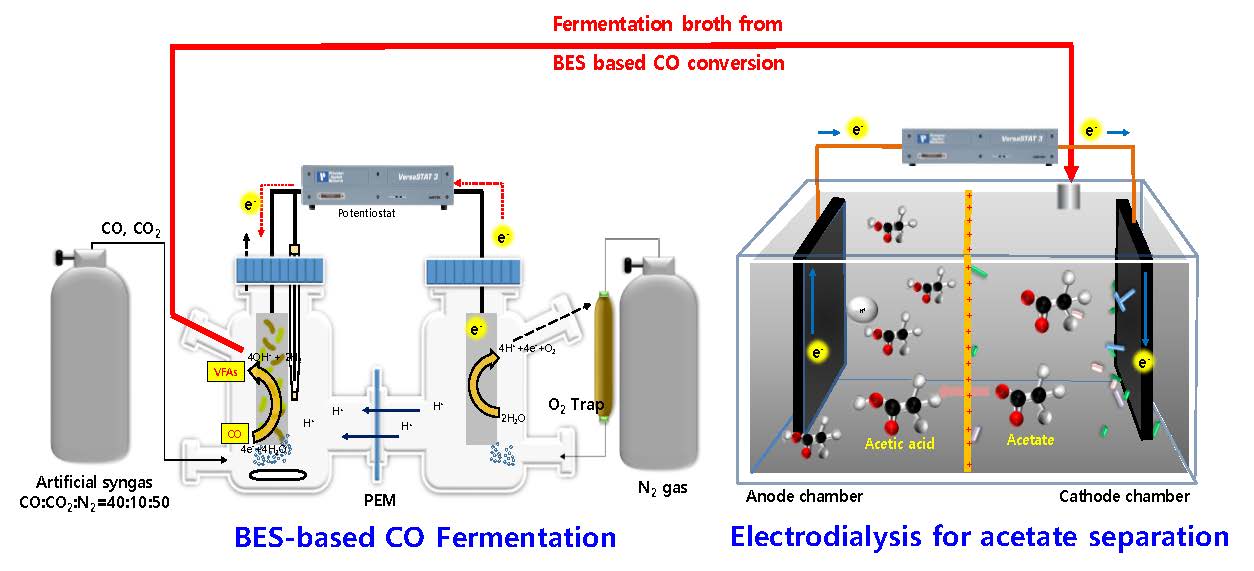The conversion of C1 gas feedstock, such as carbon monoxide (CO), into useful platform chemicals has attracted considerable interest in industrial biotechnology. One conversion method is electrode-based electron transfer to microorganisms using bioelectrochemical systems (BESs). In this BES system, acetate is the predominant component of various volatile fatty acids (VFAs). To appropriately separate and concentrate the produced acetate, a BES type electrodialysis cell with an anion exchange membrane was constructed and evaluated under various operational conditions, such as the applied external current. The higher acetate flux of 23.9 mmol/m2∙hr was observed under -15 mA current in an electrodialysis-based bioelectrochemical system. In addition, the initial acetate concentration affects the separation efficiency and transportation rate. The maximum flux appeared at 48.6 mmol/m2∙hr when the acetate concentration was 100mM, whereas the effect of the initial pH of the anolyte was negligible. The acetate flux was 14.9 mmol/m2∙hr when actual fermentation broth from BES based CO fermentation, was used as a catholyte. A comparison of the synthetic medium with the actual fermentation medium suggests that unknown substances and metabolites in the actual medium interfere with electrodialysis in the BES. These results provide information on the separation and optimal concentration for VFAs produced by C1 gas fermentation through electrodialysis, and a combination of a BES and electrodialysis.

